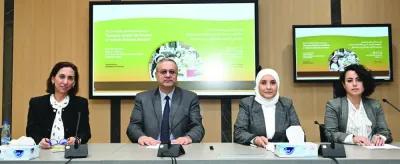While ear, nose and throat problems can strike at any time of the year, they are known to flare up in the winter months when the weather becomes cold and dry. Adenotonsillitis is one of the most common ENT conditions which may be found in people of all age groups, especially in children.
Your child has complained of a sore throat before, but ever like this, this one doesn’t seem to be going away like they usually do, there is fever, child is not eating anything, and there is nausea, swollen lymphnodes in neck. If this sounds familiar, your child could be suffering from acute tonsillitis, which is a common ENT condition or ailment seen in children, it is quite painful and should be treated as early as possible by an ENT doctor.
Your child has snoring, difficulty in sleeping, then possibility of adenoid inflammation and hypertrophy has to be checked for, if the child has both the symptoms of tonsillitis and adenoiditid, then it is called adenotonsillitis.
An adenoid is a lymphoid tissue between the back of the nose and the throat. Tonsils are two small masses of lymphoid tissue one on each side of the root of the tongue. Tonsils are visible directly when we look at our mouth in a mirror, but adenoids are not visible directly, as it is behind nasal cavity. It can be visible only by special mirrors and endoscopes what the ENT doctor uses or on a simple X-ray.
Adenotonsillitis is the inflammation of the tonsils and adenoids. Adenotonsilitis is caused by a viral or bacterial infection. Adenovirus, Influenza Virus, Parainfluenza and Streptococcus species of bacteria are the commonest organisms involved.
The virus and bacteria that causes adenotonsilitis are airborne and thus easily spread to other individuals. The symptoms are fever, sore throat, swollen tonsils that are red and may have white spots on them. This is associated with coughing, headache, and swollen lymph nodes in the neck. At times children may have nausea, vomiting, hoarseness, and bad breath.
If there is adenoiditis as well, children have blocked nose, nasal discharge, snoring and mouth breathing. In the event the tonsils and adenoids are very large and obstruct (block) the airway, the child may have a sudden difficulty to breathe while she is asleep. This suddenly awakens her. This phenomenon is called Obstructive Sleep Apnoea. Sometimes complications arise as a result of adenotonsilitis and it is mainly after a bacterial infection. The possible complications are:
l Middle ear infection known as Otitis Media where the fluid between the eardrum and inner ear becomes infected by bacteria.
l A collection of pus develops between one of the tonsils and the wall of the throat. This is called peritonsillar abscess or Quinsy.
Rarer complications are: rheumatic heart disease and glomerulonephritis
Taking paracetamol or ibuprofen helps to reduce fever and pain. Gargle and/or lozenges help to reduce pain in older children. Encourage the child to drink plenty of fluids and rest. At times symptomatic treatment for cough, blocked nose and nasal discharge may be needed. If bacterial infection is suspected, a course of antibiotics is given. If this treatment does not settle the fever and sore throat than the child will need to be admitted into hospital for intravenous antibiotics.
Most of the time, adenotonsillitis gets better within a week. However, a small number of children have tonsillitis for longer, or it keeps returning. Thus surgical treatment may be needed. Removal of tonsils is called tonsillectomy, removal of adenoid is called adenoidectomy, removal of both is called adenotonsillectomy, with the advent of modern newer techniques and advances in general anaesthesia and these surgeries are safe and are generally done as a day care procedure.
If your child has the issue of adenotonsillitis, it is recommended to visit an ENT surgeon, follow the advice of doctor strictly, avoid self-treatment and incomplete treatment, to prevent the complications of adenotonsillitis and also need for surgery.
Dr Shiju Abraham is an Associate Specialist – ENT at Aster Medical Centre

VISIBILITY: Tonsils are visible directly when we look at our mouth in a mirror, but adenoids are not visible directly, as it is behind nasal cavity. It can be visible only by special mirrors and endoscopes what the ENT doctor uses or on a simple X-ray.


